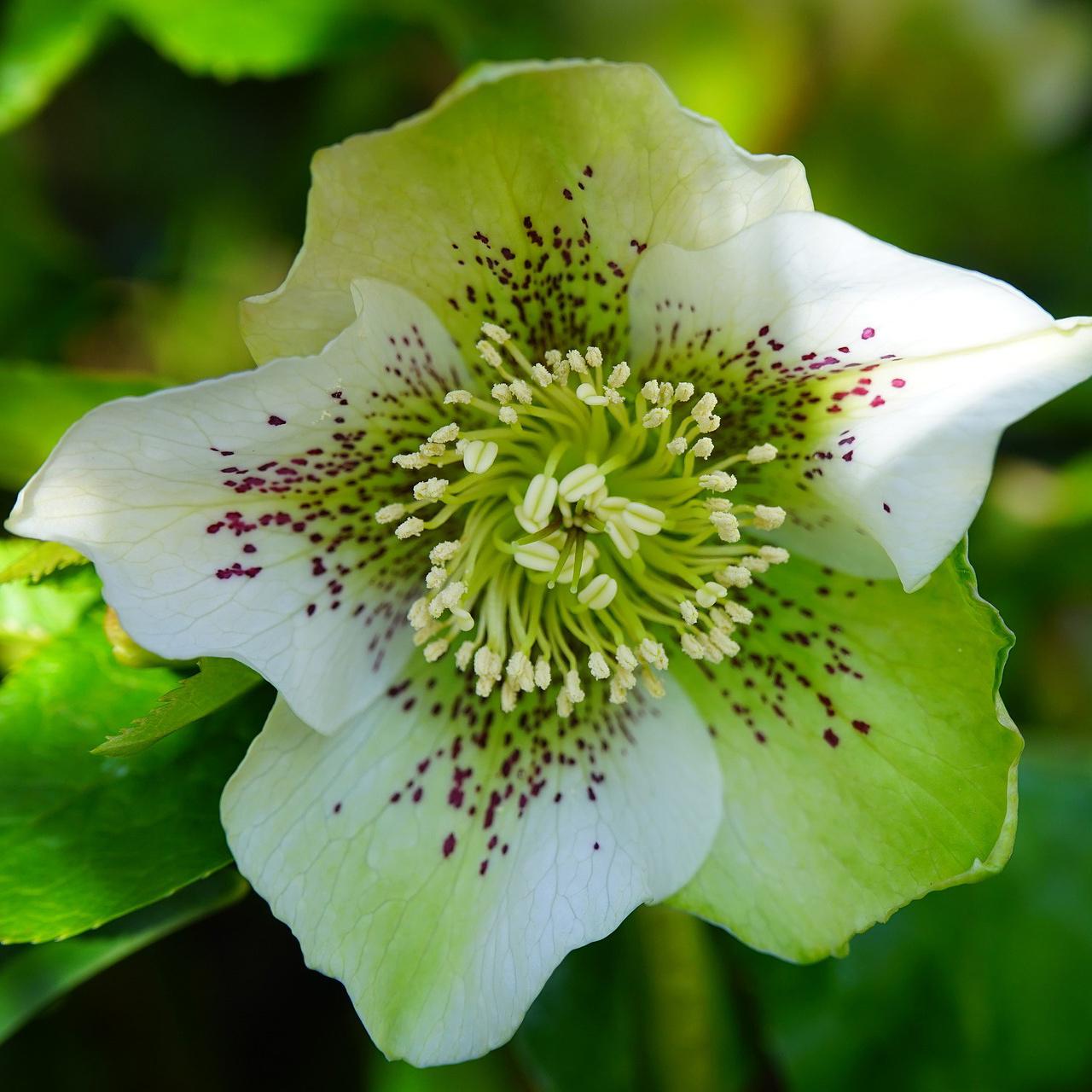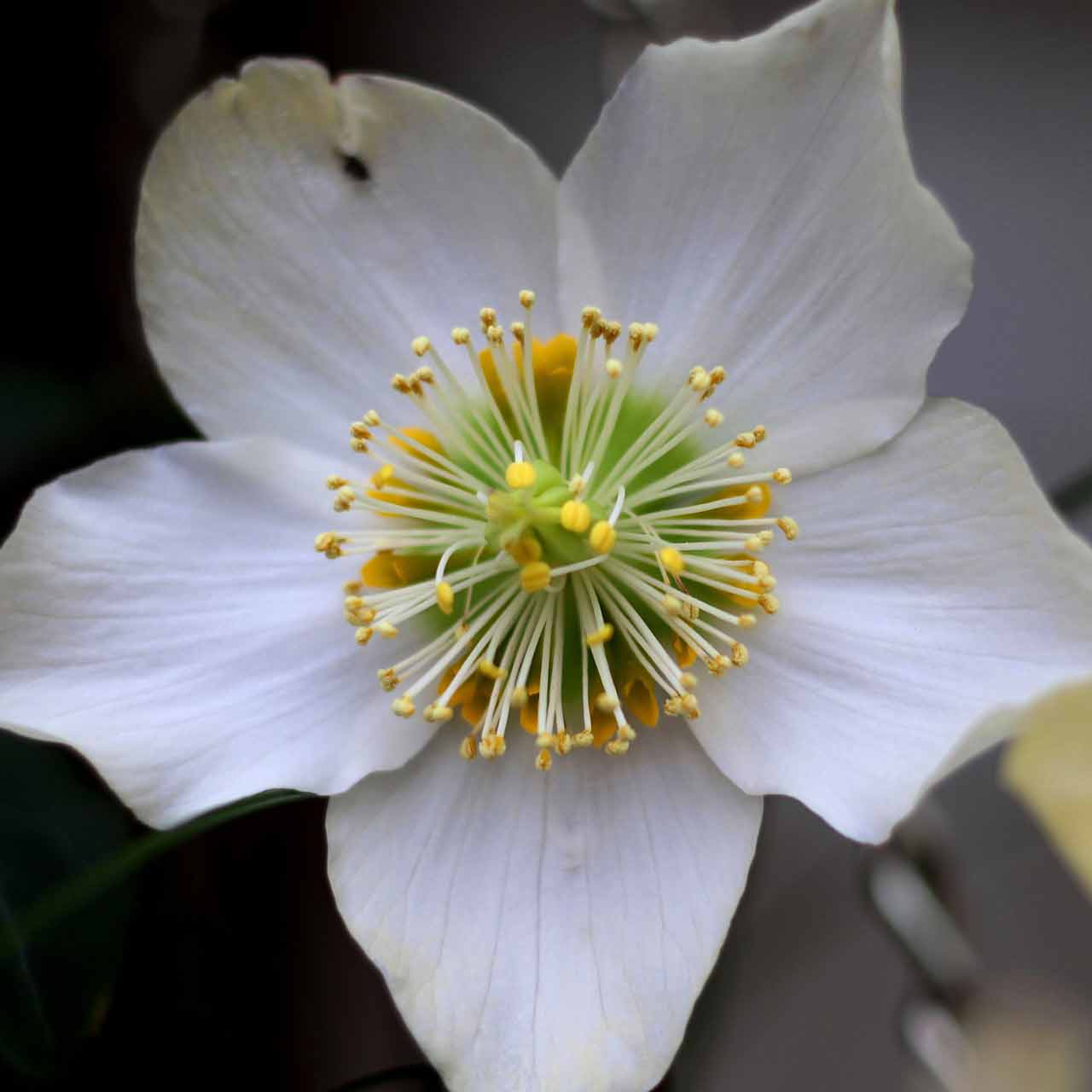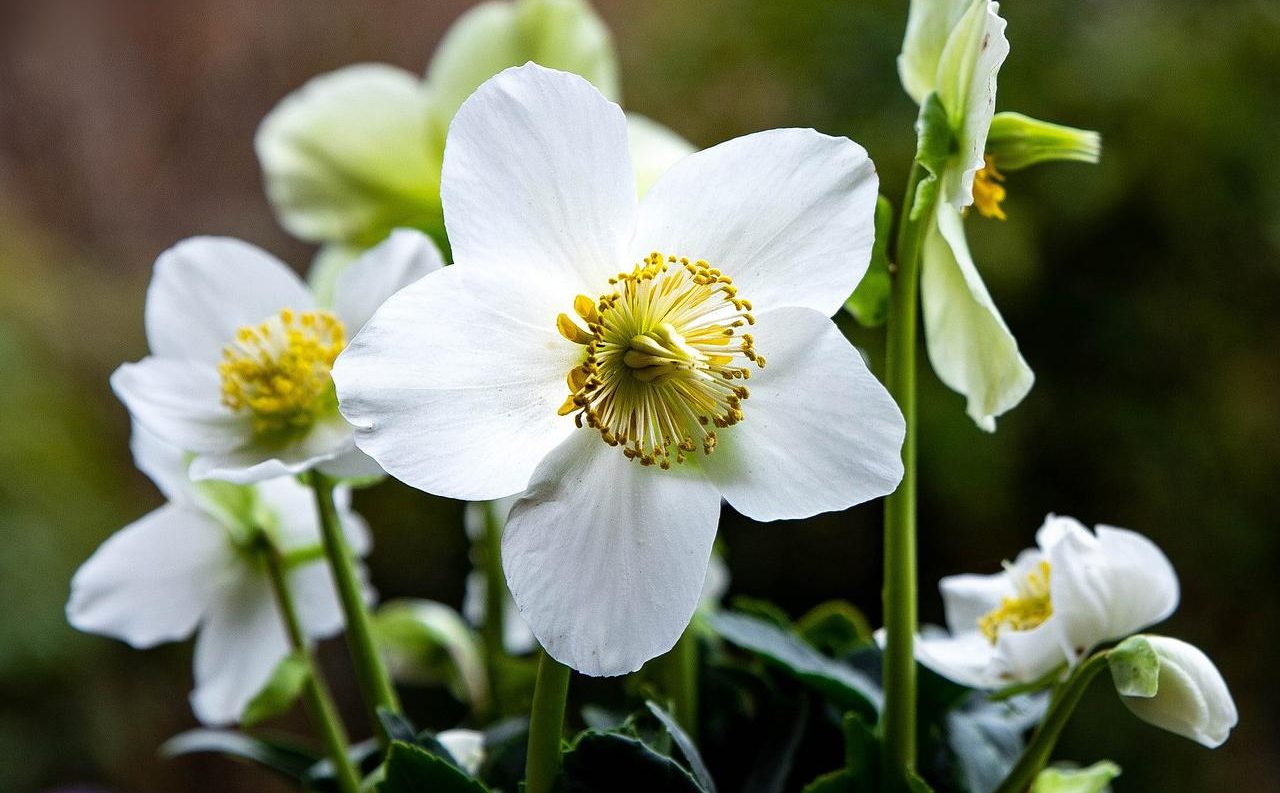Menu
You might think that January isn’t the weather to be outside planting but we beg to differ! There are many plants which, as long as the ground isn’t frozen or water-logged, will happily be moved or planted now. Woody plants, shrubs and perennials will be fairly dormant so it’s actually quite a good time to move or plant them, without risk of disturbing actively growing roots.
Our pick of the bunch for January has to be a hellebore, specifically Helleborus niger. Native to central Europe and often in flower for Christmas, it’s bowl-shaped white (or sometimes pink-flushed) flowers are what has earnt it the common name of Christmas Rose. Some of its more unusual colloquial names include the black hellebore (from its Latin name), bear’s foot, the brumal rose and St Agnes rose.
Although H. niger carries leaves for most of the year, it is in winter that its flowers steal the show. Rising from a central clump, the cluster of stems will hold the nodding, open flower cups above the ground. As the flowers go to seed, so a new flush of dark green leaves will rise to take their place, providing a semi-evergreen background to your later spring flowers. At a time of year when our gardens don’t usually offer many flowers for cutting, Helleborus niger blooms can last in a vase for several weeks, just ensure they are given water quickly after you cut them.

Helleborus niger is a perennial and hardy in the UK, withstanding temperatures down to minus -10°C (14°F) or more. It is also fairly universal in terms of its growing conditions: as long as your soil is fairly moist but free-draining, it will cope in most conditions. (Give it an autumn mulch of leaf mould or organic matter if your soil is on the sandy side). It is not a big lover of acid soil, preferring at least neutral if not slightly alkaline conditions. It will prefer a little shade in the summer and shelter in the winter, so under the canopy of a deciduous tree or similar spot could be ideal; in the wild, they are often found in woodland. They can even grow in a north-facing aspect and in heavy clay.
H. niger won’t grow very large, up to half a metre (8-12 inches) wide and tall at maturity. They tend to form clumps, which can be fairly easily divided if they get too large – a great way of propagating them. You can collect the seeds to try to grow your own but this can be less reliable, and hellebores are notorious for breeding amongst themselves, so you may find you have a new strain, especially if you have other hellebores in your garden! If you’re lucky, they may even sow themselves around your garden.

Hellebores generally need very little maintenance, just removing the leaves as they die back (usually you can just pull them off from the base). Some people find them an irritant, however, so do wear gloves when handling them just in case.
Not many pests and diseases will attack a hellebore’s slightly leathery leaves but sometimes snails can be tempted to have a munch on new growth. Hellebore aphids are quite rare but specifically adapted to feeding on the hellebore’s sap. If you are unlucky enough to find some, most common in spring and looking like pale greenfly, an established plant may well tolerate the infestation, and you may be able to wash off or pick off many by hand. Hellebore leaf spot can cause brown spots on the leaves; it is rarely enough to kill the plant but do remove any badly affected leaves to prevent them infecting others. Don’t compost these leaves to prevent it being recycled in your garden.
Helleborus niger – the Christmas Rose – is one of the stars of the winter garden and, for us, is a must have plant! If you fall in love with Hellebores, why not plant a Helleborus orientalis – the Lenten Rose – for some succession flowering in early spring?

Further reading for January:
Jobs in your garden this month
Our lawncare calendar
Be ready for Spring!
All about Snowdrops
Jobs in your garden for February
And jobs to catch up from December!
Hambrooks garden design, landscaping & garden maintenance throughout Hampshire for over 50 years.

